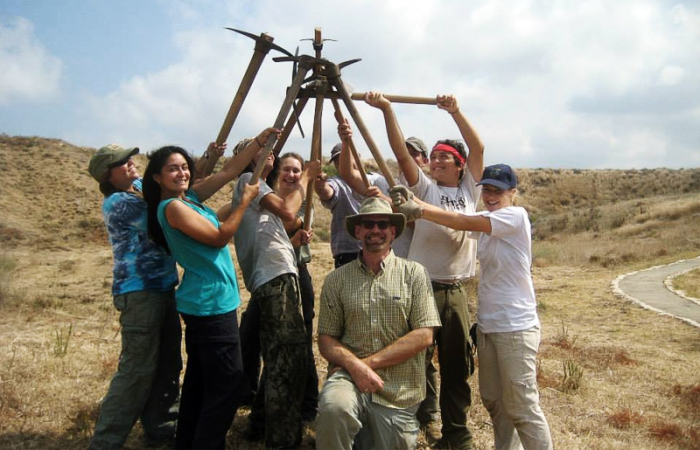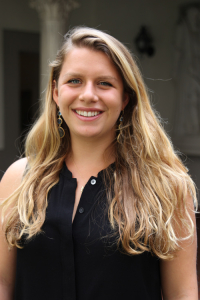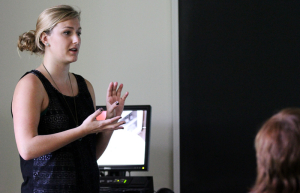
Now that they’ve returned to campus, Scripps College students are sharing some of the incredible internship experiences they had this summer. Here are a few, with more to come shortly…
An Israeli Dig
Emma Kellman ’14 (above) is no stranger to archaeology. Her internship, granted through the CMC/CGU Akko program, is the second time she’s traveled to a dig in Israel.
“I began with two weeks in the pottery lab where I assisted the ceramicists in pottery readings and entered data from the previous year’s pottery collections,” she says. “This was largely a continuation of the work I’d done during my semester abroad at the University of Haifa, where I interned in the Maritime Civilizations lab doing data entry and pottery identification for the 2012 season.”
After the first two weeks, Kellman worked as an assistant supervisor on the survey team. She was responsible for telling other volunteers where to start their digs and what to do when they found artifacts.
“It was an overwhelmingly wonderful, invaluable, and highly stimulating summer for me,” Kellman adds.
Feeding Politics
 Jean Larsen ’14‘s internship led her to New York and the Natural Resources Defense Council. “I worked with policy analyst Sasha Lyutse to develop a literature review of food waste research from the past twenty years,” she says.
Jean Larsen ’14‘s internship led her to New York and the Natural Resources Defense Council. “I worked with policy analyst Sasha Lyutse to develop a literature review of food waste research from the past twenty years,” she says.
This internship expanded Larson’s education in food politics from Scripps.
“Food waste is truly the missing link between environmental degradation, obesity, and hunger,” Larson says. “On average, supermarkets expect to lose about 10 percent of their perishable items due to spoilage. One quarter of the fresh water used to grow food is actually used to grow food that is never eaten.”
Larson also followed the council’s debates on divestment and fracking and was fortunate to watch George Black, a contributor to On Earth magazine, narrate a short animated film about coal pollution.
“I had a fantastic experience,” she says. “I learned so much about myself, environmentalism, and what it means to work for a really successful non-profit today.”
Analyzing Cancer
Alexandra Forsyth ’15 had an amazing and rewarding summer analyzing breast cancer cells and potential treatments, and research she and her lab performed will influence types of therapy used on women with breast cancer.
 “The coolest thing is knowing research I did will be used to help women battling breast cancer,” says Forsyth. “I felt like I was actually making a difference.”
“The coolest thing is knowing research I did will be used to help women battling breast cancer,” says Forsyth. “I felt like I was actually making a difference.”
Forsyth conducted the research as a part of the Knight Cancer Research Center at Oregon Health and Science University. A science and management major on the bio-tech track, she built upon her extensive W.M. Keck Science Department experience with real-world applications of the immune system, genetics, and different ways of collecting and analyzing data.
For her first project, Forsyth analyzed both the number and size of cancer cells in mice that had metastasized from the mammary gland to the lung when the cancer was treated with different combination treatments. In her second project, Forsyth inoculated cancer into mice so that they had cancer. Once the tumors were big enough to measure, Forsyth began a few types of combination therapies on the mice, and measured their tumor growth every five days for about 25 days. Her third project involved isolating RNA from healthy human breast tissue that was either near or far away from the tumors of women who had mastectomies during the past 3 years.

